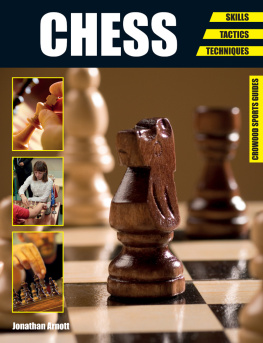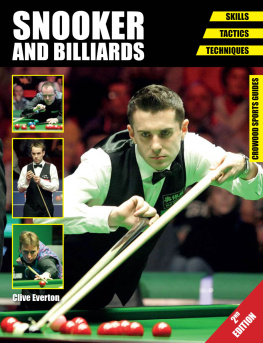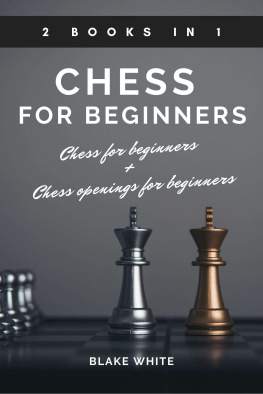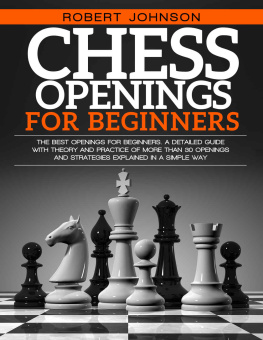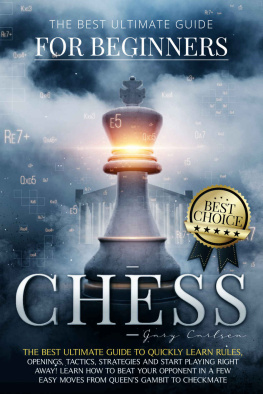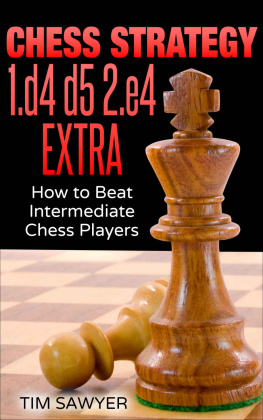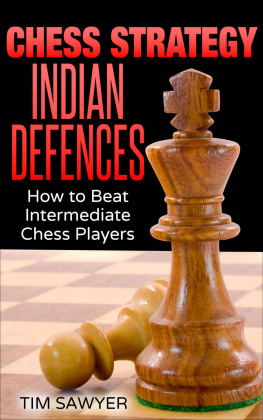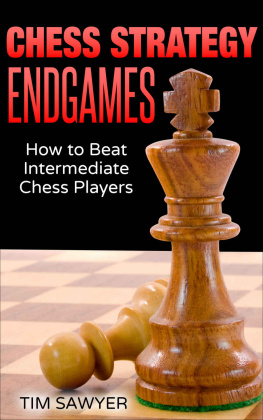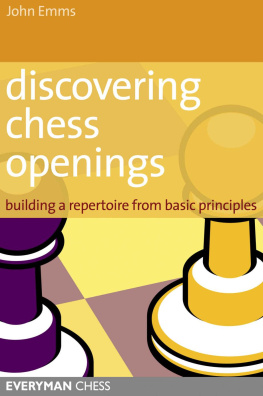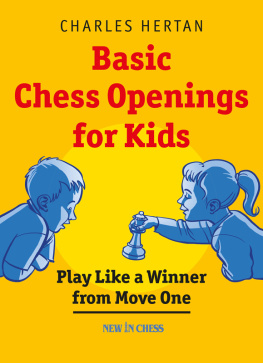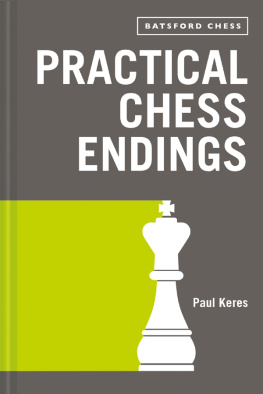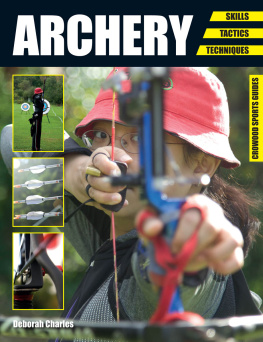
Jonathan Arnott

THE CROWOOD PRESS
First published in 2014 by
The Crowood Press Ltd
Ramsbury, Marlborough
Wiltshire SN8 2HR
www.crowood.com
This e-book first published in 2014
Jonathan Arnott 2014
All rights reserved. No part of this publication may be reproduced or transmitted in any form or by any means, electronic or mechanical, including photocopy, recording, or any information storage and retrieval system, without permission in writing from the publishers.
British Library Cataloguing-in-Publication Data
A catalogue record for this book is available from the British Library.
ISBN 978 1 84797 706 9
Photographs by Dreamstime
CONTENTS
Dedication
To John Fryer, who taught me my first steps in chess over twenty-five years ago and has been teaching children and adults to play chess for much longer. His passion for the game has been inspirational to generations of new chess players in Sheffield.
Acknowledgements
To Shaun Procter-Green and Jennifer Ruchat for invaluable feedback about the sequencing of material and the difficulty levels from the perspective of adult chess beginners. To International Master Richard Palliser for technical advice and the correction of a number of errors.
INTRODUCTION
Chess can be many things. At its most basic level it is a struggle between two competitors, engaged in a battle of wits. It is a great equalizer: I learned the game at the age of four, and it was not long before I was beating adults. At the other end of the scale, I had the privilege a couple of years ago to watch the great Viktor Korchnoi in action. I was competing in the Gibraltar International chess festival in 2011, and one of the top board games saw Korchnoi coming up to his eightieth birthday drawn to face the up-andcoming Italian Grandmaster Caruana, still a teenager at the time but ranked No.10 in the world then (and at the time of writing has moved up to No.3). In chess White always starts first, and Korchnoi had the disadvantage of the Black pieces; few would have given this frail old man any chance of defeating the world No.10. Yet Korchnois brilliance was still there: his casual demolition of one of the best players in the world was simply breathtaking. Other players have achieved remarkable success while young. Years earlier, Bobby Fischer qualified for the Candidates tournament for the world title at the age of just fifteen. And Judit Polgar, the strongest ever female chess player, peaked at No.8 in the world aged 15. Man or woman, old or young, everyone starts from the same sixty-four squares. Which other sport can claim that?
But chess is more than just a game, more than just a gladiatorial fight between two contestants determined to achieve supremacy. It is an art form: the patterns made by the pieces can become a thing of beauty. Or perhaps, it is better compared to a musical symphony where each instrument plays its own part. In chess, each individual piece has its own unique attributes. The art of chess lies in learning to co-ordinate the disparate moves in a harmonious way. Sometimes a strong chessplayer will call a move ugly: a quick glance at the position is enough to see that something is amiss.
PLAYER PROFILE: VIKTOR KORCHNOI
Viktor Korchnoi was born in Russia in 1931. In 1978 and 1981 Korchnoi challenged for the world title, losing to Anatoly Karpov both times. In 1976, at the height of the Cold War, Korchnoi defected to the West after asking British Grandmaster Tony Miles how to spell political asylum.
The matches were particularly tense affairs due to the fallout from his defection.
At the age of seventy-five, Korchnoi was still ranked No.87 in the world, and he became Swiss champion at the age of seventy-eight.
Everyone has their own style in chess. Some players are brutal, going for all-out attack. Others play in a technical, correct manner. My own style lies somewhere between the two: I wait for my opponent to commit, then counter-attack hard. In this, chess is no different to any sport; personal style matters. Cricket fans will instantly recognize the difference between Kevin Pietersens batting and that of Geoffrey Boycott some years ago. But where chess is different is that in many positions there is a single, objective best move.
There have been literally thousands of books written on chess. One of the first books I ever read on the game was Tony Kostens Winning Endgames, also published by Crowood. Almost all of them either assume a lot of basic knowledge, or are aimed predominantly at teaching children the game.
This book on the other hand is aimed at the average person on the street. Some will already know the rules of the game, others will know nothing. Maybe you played a few games of chess at school. Maybe your child has taken up the game and you want to be able to catch up, to understand what he/she is talking about. Maybe you would like to join a chess club. Or maybe you just want to know what the fuss is all about. This book is aimed at people like you. In a short book like this, there is a limit to how much it is possible to include. I will unashamedly ignore some basic material which is unlikely to occur in real games, and focus only on what is needed for you to improve from beginner to winner.
The content of this book is quite intensive. When young junior players are coached, it takes months or even years to for them cover all of it. Few people will be able to read it from cover to cover in one go. It is much better to read and absorb each section, then put the ideas into practice in your own games, whether that is over the board against a friend of similar chess-playing ability or on the internet. If you put in plenty of practice as well as reading this guide, the material contained in it should be enough for you to play to a reasonable standard for a club in your local league or compete in one of the many weekend competitions which take place around the country.
Good luck!
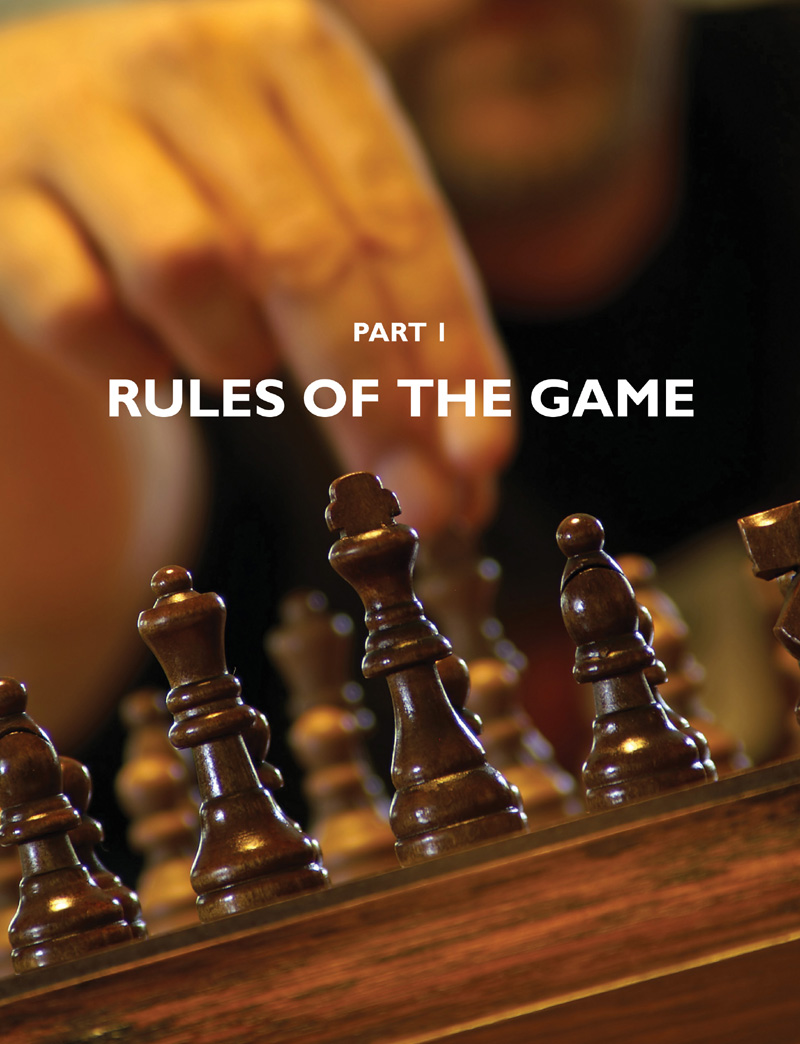
CHAPTER 1
CHESS NOTATION
One of the great things about chess is that it is very easy to record a game using the standard chess notation. You can play through the game again afterwards, show it to your friends and gloat or ask a stronger player to look through it and find your mistakes. My database has well over four and a half million games, so if I know who I will be playing I can look up my opponent and find their strengths and weaknesses as well as their opening moves.
Understanding notation is necessary to read any chess book, and also to compete: in league matches and standard-play competitions, competitors are obliged to write down their moves. Apart from anything else, having a record of the game enables disputes to be settled easily.
It makes sense to use this notation once you are used to it, it is far easier to say 20. Bb6 than to say On the twentieth move of the game, white moves his bishop to the square b6. We will deal with the most basic notation very quickly, and learn the rest later as it is needed in the book.
The Board
Chess is played on sixty-four squares on an eight-by-eight square board. Thirty-two of the squares are black; thirty-two are white. We arrange the board with a white square on the right-hand side (this does not make any technical difference to the game but is a convention that cannot be ignored). Each square has its own name, given by a co-ordinate system. To find the name of a given square, read down from the square and you get a letter from

